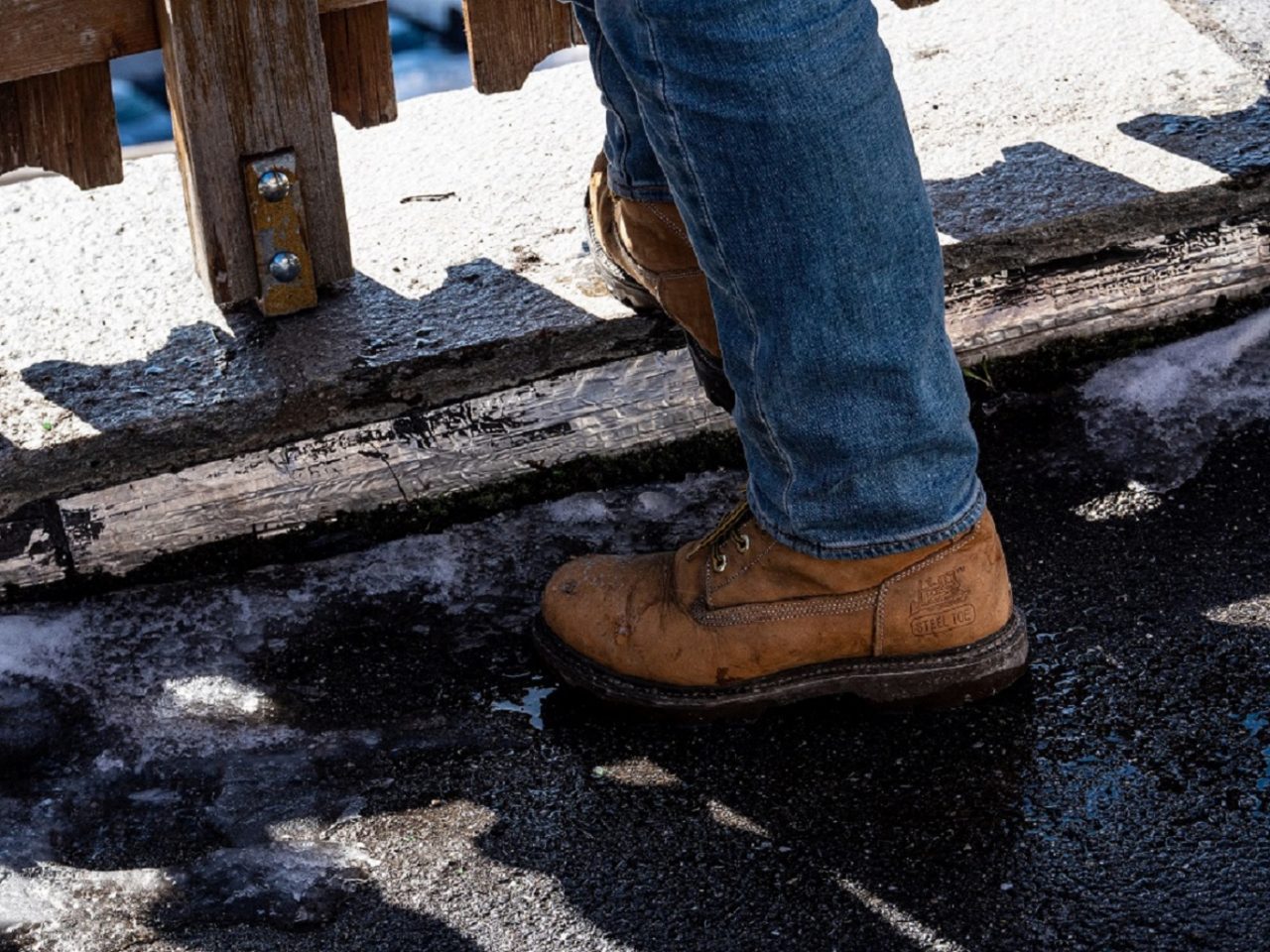Workwear Guru is reader-supported. When you buy through links on our site, we may earn an affiliate commission. Learn more
Investing in a pair of qualitative work footwear is essential since they will contribute to your workplace safety as well as comfort. In order to provide you with the protection and support needed, work boots have excellent leather exteriors and highly resistant rubber outsoles.
Moreover, what makes your work footwear durable and safe to wear is its protective and supportive system. The majority of these constituent elements are visible and easy to recognize. However, some of the most crucial components of your work boots are hidden deep within the structure and are not visible to the naked eye.
When it comes to your boot’s elements and construction, the shank is responsible for sustaining its structure. Now, you may ask how important this minor component is?
In this guide, we will look at what is a boot shank is, what its types are, and how it functions in today’s work boots.
What is a boot shank?
At first, you may be asking, what is a boot shank exactly? The boot shank is a supporting section made of steel or another robust and flexible material that sits between your shoe’s insole and outsole. It is typically placed under the arch, between the ball and heel of your foot. It’s not visible, but it’s there to help!
Shanks ease the strain by reducing the load on your arches, calves, and knees, as well as assisting you in maintaining your balance on uneven terrain. Steel shank boots provide additional support to the arches of your feet, which helps you avoid tiredness after a long day of work. In addition, they keep the shape of the boot over time, ensuring that you get the most out of your investment.
We have already answered the question of what is a boot shank. At this point, it is about time to give our full attention to the most common boot shank, which is the steel shank. Together, let’s get an answer to what is a steel shank in a boot and the benefits of having one attached to your work boots.
What is a steel shank in a boot?
Steel shanks, arguably the most popular of all shank types, have been around since the inception of the first work boot. While steel may appear to be a large and bulky material, steel shanks are essentially thin bits of metal inserted between your work boots, and it is almost the same as putting some small metal plates in your shoes. Moreover, steel shanks are far sturdier than other types, making them the best option for puncture resistance.
Steel shanks, however, tend to set off metal detectors and are temperature sensitive; yet, their benefits greatly outweigh their drawbacks. Your decision on wearing steel boot shanks will be influenced by your work environment as well as the number of security checks you undertake each day. This type of shank will protect you from bruising if you climb ladders or walk on uneven, rugged terrain.
Do shanks come only in steel?
Shanks, just like shoes, exist in a variety of different shapes, sizes, and sorts. Some shanks are the whole outsole length, while others are half or three-quarters of the outsole length. Full-length shanks are the heaviest, and they can’t be bent in half. Shanks will not weigh you down, but they will keep your arches from becoming strained.
Shanks are traditionally constructed out of steel. On the other hand, contemporary shanks are built of materials such as fiberglass, plastic, wood, nylon, and carbon fiber, among others. However, your boots’ structure and support are preserved thanks to a solid shank regardless of the material.
Fiberglass shank
Fiberglass shoe shanks are much warmer and softer than standard steel shanks, and they are the lightest and most flexible type of shank due to their composition. Fiberglass shanks can still hold the same weight as steel shanks despite their flexibility and low weight.
Fiberglass shoe shanks provide a lot of support, which helps to relieve stress and soreness in the arches and ankles. Moreover, the room provided by these shoe shanks allows for lots of natural movement. An increasing number of construction workplaces are adopting this sort of shoe shank to provide their workers with a lightweight and flexible option.
Wood shank
Wood shanks are a durable option and are generally used for many traditional low heeled welted shoes. They are made out of beech wood, dried at very high temperatures to minimize warping, and finally waxed for ease of use and a clean finish.
Wood shanks are available in a range of lengths, widths, and shapes. In many cases, wood shanks are installed on boots with insoles made out of leather, so the boots have a better-cemented bond, rather than using steel, which would ideally have to be secured with a metal rivet. In addition, wood shanks are undetectable when undergoing security checks which is an advantage compared to steel shanks.
Nylon shank
Nylon shanks are a highly durable shank option. They are much softer than steel shanks per se, but they’re still highly supportive and, without a doubt, comfy. Nylon shanks are flexible and lightweight because of the particular material used, allowing you to walk and operate more efficiently.
Nylon shoe shanks have just the correct amount of flexibility, allowing for natural foot movements. The only disadvantage of this shoe shank is that it lacks sturdiness when the feet come into touch with sharp objects or pebbles because it is not made of steel. They are, however, exactly as effective as steel shoe shanks in terms of stabilizing your steeps.
Carbon fiber shank
Carbon-fiber shanks provide stiffness at low densities and a lot of design flexibility because the material can be built layer by layer at varying angles to create sheets customized to specific performance and mechanical parameters.
The carbon fiber shanks have been used for great stability since their thickness can be kept to a minimum to produce a lightweight feel. In addition, the excellent properties of carbon-fiber composites can significantly improve the torsional stiffness of a boot and help smooth the transition from the heel.
Composite shank
These shanks are called composite because they are typically composed of fiberglass, plastic, and nylon materials. They are substantially warmer and softer than steel shanks, and they provide the most lightweight and flexible features due to their unique materials. However, don’t be confused by the reduced weight and increased flexibility; these shanks can stand up to steel in a fight.
Apart from being light, they provide you just enough room to move about in your shoes naturally as well. Composite shanks offer enough support to assist relieve pain and stress in your arches.
Plastic shank
Because both plastic and nylon shanks are constructed of elastic material, they are pretty similar. Plastic shanks are way softer and warmer than steel ones, yet they still provide adequate support for your ankles. Furthermore, they are flexible enough to accommodate very natural movements.
Benefits of wearing steel shank work boots?
The benefits of wearing steel shank work boots are limitless. A steel shank is a critical component to a boot’s performance since it gives the boot its shape and reduces the stress on the wearer’s calves and feet.
Steel shanks provide workers with additional balance, comfort, and support for those painful and overworked arches. In addition, they help your expensive boots keep their shape over time and retain them in fine working condition for longer. Simultaneously, they are helpful in dangerous workplaces where sharp items pose a threat from underneath.
Another vital feature is a steel shank’s ability to handle the impact of bruises, injuries, and discomfort caused by climbing ladders, walking on uneven ground or walking on rocky terrains. In other words, wearing steel shank boots, you’ll feel more balanced and comfortable.
What kind of job requires steel shank work boots?
Steel toe boots are required for various jobs, including heavy manufacturing, welding, heavy equipment repair, and numerous warehouse operations.
People who work on construction fields, in factories, like linemen, or in industries that deal with sharp objects or heavy machinery should invest in a sturdy pair of steel-shank work boots. This will provide them with adequate defense against anything that penetrates the bottom of the foot.
Moreover, if your job needs you to be on your feet all day, a steel shank work boot will be highly beneficial because it provides greater comfort, arch support and minimizes fatigue.
Final Thoughts
Ultimately, shanks are a shoe component that’s easy to take for granted since they are buried in the construction. However, investing in shanks for your work boots is essential. They are a wise investment as they also provide protection and support for your tired arches. Shanks protect you from stepping bruises if you use a ladder frequently. Similarly, workers who operate on rocky terrain, on construction sites, or in regions with piercing sharp things from below will benefit immensely from a sturdy shank.











